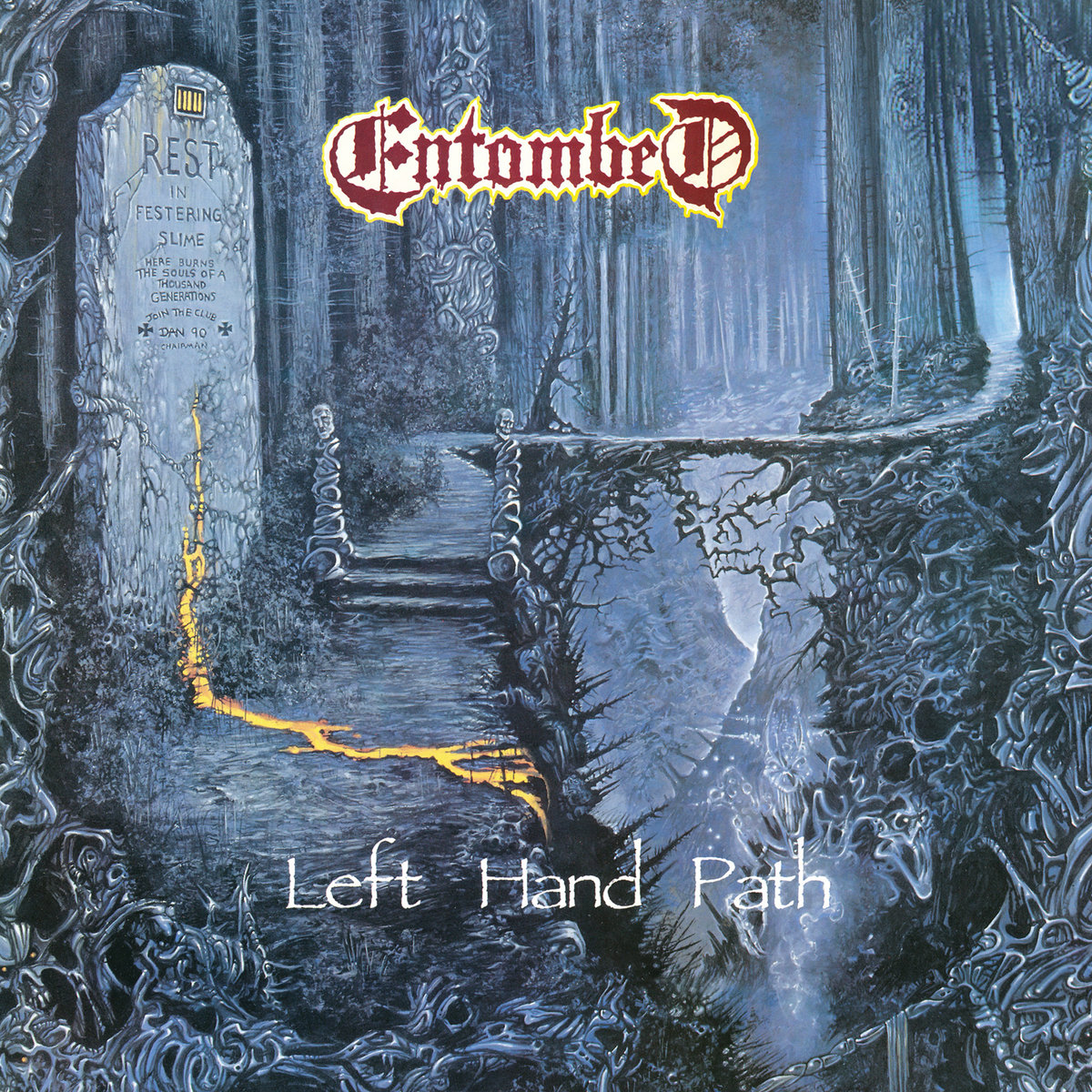Klipsch replaced their Reference II series and Icon series sometime beginning in 2014 with two new tiers of speakers, the Monitor/Reference series, which includes the R-15m, R-14m, R-25C, and the R-24/26/28f. The Premier series, which is the real Reference II upgrade, includes an incarnation of all the previous II series with improvements, including a new hybrid Tractrix horn, with a circular throat opening up into the horn. Klipsch seems to love horn loading things, and have decided to replace their ports with their new tractrix horn ports in the RP series.
Specs:
MSRP: $249
5.25" copper spun IMG woofer
Rear flared port
Single set of binding posts in the back
1" aluminum compression tweeter loaded into a 90x90 Tractrix horn
Crossover frequency: 1.8khz
Sensitivity: 94dB 1w/1m
Height 12.5"
Depth 8.11"
Width 7"
Weight 5lbs ea
Claimed low frequency response: 64hz -3dB
A note about Klipsch sensitivity, Klipsch claims their sensitivity ratings are derived in a reverberant sound field, i.e. similar to typical in room reflections rather than anechoic, many people have noted that their outdoor or anechoic sensitivity ratings are a bit lower. I will state however, they do play significantly louder with less volume than comparable speakers. I'm using a set of polk audio speakers rated at 89dB 1w1m as rear surrounds and at an equal distance, the klipsch measure about 6.5dB louder, in fact, the klipsch are significantly louder than every pair of speakers I've owned or currently own, including a set of floor standers rated at 91dB. At some point in time when I have the proper equipment, I intend to measure the sensitivity, until then, I'm satisfied by simply observing their efficiency in comparison to others.
Fit, Finish, and Build Quality
**Actual Photos coming soon**
The cabinets are built using 3/4" MDF and easily pass the knock test with flying colors. I have not attempted to disassemble the speaker to look at the internals no do I plan to due to the complications involved with the front plate, but looking inside the port and by removing the binding post plate, there appears to be seem decent bracing as well as acoustic stuffing. The cabinet sounds pretty inert during playback. The construction is solid and looks professionally finished. Instead of the ugly (in my opinion) woodgrain black vinyl, they are finished with a brushed metal look. They come with optional rubber feet in the package that adhere to the bottom of the speaker, which I strongly suggest using, as the finish looks like it could easily be scratched from shuffling around and is pretty slippery in comparison to the woodgrain texture.
Aren't these just copper colored Icons with a reference badge?
Short answer, no. For the long answer, keep reading.
The tweeter appears to be the same tweeter used in the KB-15 Icon series bookshelves, though their was never anything wrong with the tweeters in (aside from obvious brightness) the Icon's, it was the woofers that were the issue. There has been a lot of speculation that these are the old Icon series with copper colored drivers. Objectively speaking, that's simply not true. While the box design and tweeters appear to be more or less the same, the woofer is not. Just from observation, the dust cap is flush with the cone on the Reference whereas it protrudes on the Icon's, the slope and depth of the cone is slightly different as well, the Reference series are slightly deeper and more uniform, whereas the Icon's were somewhat shallower. A tap test reveals the Reference series to be much less resonant and have considerably less flex than the Icon's.
So what does copper spun mean and how are the drivers different from the old Icon series? According to a conversation I had with Klipsch over the phone, similarly to the cerametallic woofers, the woofers are sandwiched with aluminum that has been anodized to a copper color. The Reference II series and RP series utilize a proprietary woofer made of ceramic composite layered between aluminum, hence the word "cerametallic", the difference between the new Reference series and the RP and RII series is the Reference series utilizes injection molded graphite instead of the ceramic composite. I was told the design of the woofers was changed significantly to give a much tighter, more accurate response. The differences between the two is proprietary information, but rest assured, these are not Icons that have been colored orange and rebadged.
The real proof is in the measurements. Measurements don't lie, and the Icon's measure and sound significantly worse.
Measurments, Sound Quality, and Comparison to the Icon KB-15 and Reference II series
Subjective sound quality:
Unlike the previous Reference II series, these sound significantly less shrill and bright than the classic klipsch sound, in fact, these are much more musical to listen to. Nothing sticks out as overwhelming and they sound pretty neutral and transparent. I really like testing the transient response and clarity of speakers with using Heavy Metal, despite the fact this is my preferred genre of music, there is usually so much going on and at such a fast pace that poor speakers end up mashing the genre into smeared, blurry, non-distinct noise, while accurate speakers with quick decay times tend to sound lively and dynamic, discretely rendering each note and instrument. For the test, I played Entombed's Left Hand Path Album. The record label in question has released a "Full Dynamic Range" edition of this album with no DRC applied, making this the perfect test of dynamics, transient response, and detail resolution. Other albums used for testing include Mussorgsky's Picture at an exhibition, both the Organ adaoatation by Guillou, and the regular Orchestra version performed by the Marinsky Orchestra, along with countless others. Movies used include Interstellar, and probably a dozen others I've watched over the past 6 months. Unlike most reviews, this is a long 6 month audition of these speakers playing a wide variety of content, I'm not one to just give it a quick test with a couple of different materials and come to a conclusion, I have spent a considerable amount of time with these speakers.



The first thing I noticed was that they resolve an incredible amount of detail and depth. The R-15m's extract every tiny nuance from a recording, from the sound of fingers sliding across the fret board of an acoustic guitar, the breath and air of a vocalist, to the sound of an actors clothes rustling in films, nothing can hide from these speakers. There are two types of "detail extraction" you can get from a speaker in my experience. "Fake" detail that comes from a speaker being bright, or what I call true detail extraction that comes from a speaker being very "fast" and responsive to transients. These fit into the latter category.
During my initial listening session, I noticed very fine detail and nuances I hadn't noticed before. The separation of instruments and their individual notes and harmonics is jaw dropping, even with heavily congested soundtracks such as heavy metal albums. They never smeared or squashed the sound, every instrument and note is heard clearly and discretely in the mix, even in poorly mixed tracks, which is common in lower budget Black Metal recordings I frequently listen to. With highly dynamic music such as Classical or the infamous Pipe Organ, they handle dynamics with ease, even with peaks of 100dB. Orchestras sound live and their instruments tonally natural. Thanks to the efficiency and the horns, the sound is huge and authoritative even at high volumes, performing as well as most large floor standing speakers. Imaging is decent, with a fairly wide sweet spot, however they do require a good amount of toe-in to properly portray a phantom center. While it is generally recommended that the L/R speakers are the same distance apart as the distance to the listening position, these sound better a bit closer in. At a distance of 9ft, I find placing them about 7ft apart gives the best imaging and sound. Nevertheless, the soundstage is still very wide and three dimensional, even outside of the sweet spot where the phantom center is lost.
For most music, the bass performance is adequate without the use of a subwoofer. As you will see in the measurement section, the speakers actually have a -3dB response (outside of a corner and 3 ft from any room boundaries, measured at 1m) of 50hz, with a useful extension to around 40hz at -9dB.
They perform exceptionally well in movies. The imaging is huge and they handle dynamics such as explosions and gunshots effortlessly, watching Interstellar set to reference level and utilizing a crossover point of 60hz, even with measured peaks in excess of 100dB they never sound compressed or strained. Loud peaks sounded loud and authoritative, and soft sounds sound quiet yet detailed. In 2ch mode, dialog is clear and voices sound realistic, there is no chestiness or sibiliance. Port noise is non existent above 60hz at any volume, however, at and below 60hz it becomes obvious and annoying above 90dB, getting substantially worse below 40hz. I would recommend crossing them over at 60-80hz despite them extending to 50hz, the reasoning for which will be explained in the following segment.
**Planned measurements not yet included: THD at 85dB and 105dB (average and peak cinema reference volumes)**
All measurements taken at 75dB as measured by pink noise on an external SPL meter set to C weighting at the distance from the measurement microphone. Method of audio interface is 24 bit 192khz LPCM over HDMI in Direct mode to bypass all DSP processing in the AVR, all enhancements have been disabled in windows and the volume control was set to max. Unfortunately REW kept crashing because it doesn't like play nicely with HDMI output and I got tired of re-calibrating the SPL, so I just took pink noise measurements using the built in SPL meter prior to each measurement and have included the reference point. Input is 16bit 48khz. All measurements below 20hz are simply the noise floor of the sound device in question, unfortunately I haven't figured out how to use 24bit mode in REW to increase the SNR. These are in room measurements, in a room with average liveliness.
I have taken 4 separate measurements. On axis at 1m, on axis as 2m, off axis horizontally at 3m, and off axis vertically (four feet below the speaker) at 3m. I chose 2m because at 3m I've entered what I like to call the "bass vacuum" (where the reflected sound at the room modes and direct sound meet). Smoothing applied is psychoacoustic smoothing, which takes into account the ears sensitivity to spl differences across different octaves (i.e. we're not going to perceive a 6dB difference between 8khz and 10khz, whereas a 6dB difference between 60hz and 70hz would be perceptible). Due to the nature of the dispersion of horns, Klipsch speakers sound much brighter close up and they don't measure as accurately, therefore I have included both 1m and 2m measurements.
A rough estimate of the cabinet volume comes out to 0.33 cubic feet. The port is 2" in diameter and 5" in length giving us a port tuning frequency of ~63hz.
1m on axis (68.8dB reference)
At one meter, the -3dB point is ~53hz
2m on axis (68.8dB reference)
At 2m, the -3dB point is ~47hz. It's worth noting I got the same -3dB measurement in two different rooms in my house, both of different sizes.
45 degrees off axis horizontally at 3m (74dB reference)
45 degrees off axis vertically at 3m
Not too bad for a $250 pair of speakers. Horizontally off axis, these don't look too bad. As expected, vertical off axis response isn't very good, the mids definitely get sucked out. At 1m there is a 3dB spike at 13.5khz, this is much less pronounced at 2m. While my measurements actually show a total deviation of +3dB and -7dB, this is likely just the room factoring into the response, since multiple measurements at different areas of the room vary the response. The only deviation that remains regardless of mic placement is the bump at 13.5khz.
Let's take a look at THD measured at 75dB. I've centered the cursor at the port tuning frequency.
At 63hz, THD is 2.08% Above 63hz, at the -3dB point of 47hz, THD measures at 4.33% The largest THD measurement is 10% at 107hz, with an average THD across the spectrum from 63hz to 16khz being 2.05%. As expected, below the port tuning frewquency, THD rapidly climbs to a peak of 72.3% at 31hz, with appropriate bass management, this is irrelevant though.
I'm no expert at what good THD measurements are, but I do know that most experts will claim that THD below 10% is usually inaudible. As previously stated, 85dB and 105dB THD measurements are planned.
I do have waterfall graphs, but quite frankly I have no idea how to interpret them objectively, if someone would like to take a look at them and PM me their input, I would be happy to include it into this post. I will say the waterfall graph shows substantially longer decay times for the Icon vs the R-15m.
Summing up and conclusion
For $250, you will be hard pressed to find a speaker capable of the resolution, dynamics, and accuracy of the Klipsch R-15m. I was so impressed by this series that as soon as I heard them at a local Best Buy I brought them home and used them as my L/R speakers, upon listening for a few days, I went ahead and replaced my entire setup with the new Reference Series. It has been about 6 months now and I am still extremely satisfied with my decision. The R-15m's are breathtakingly detailed, fast, accurate, and dynamic at any SPL level. They can hold their own without a sub for music, and can fill a medium to large room with rich, dynamic sound in both movies and music. While sweet spot is slightly narrower due to the dispersion pattern of horns, the soundstage is massive and three dimensional even outside of the sweet spot.
If you are looking for a budget bookshelf speaker that can match the dynamics and power of a floorstanding speaker, look no further than the R-15m's. To fill a 20'x14' room with an undistorted 105dB SPL is a task that even some floorstanding speakers will fail at.
I highly recommend these speakers to both klipsch fans and to those who have previously steered clear of klipsch due to their shriller highs, these are truly a step towards perfection of the klipsch sound, with many of the previous flaws solved and the strengths improved upon. I strongly suggest anyone who is looking for a new set of speakers take some time and head out to their local Best Buy and audition the new Reference series, the budget series, or the Premier series, you might just find yourself coming home with an entire set.